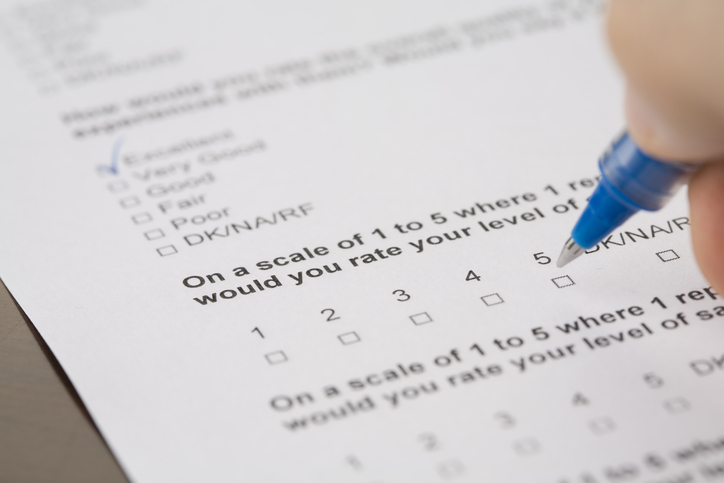 Bloomsbury Publishing
Bloomsbury PublishingFor South Koreans, tteokbokki is more than a snack. It’s soul food.
This sweet and spicy dish made with chewy rice cakes is a staple of Korea’s street food culture and beloved by people of all ages.
It’s the food students turn…

 Bloomsbury Publishing
Bloomsbury PublishingFor South Koreans, tteokbokki is more than a snack. It’s soul food.
This sweet and spicy dish made with chewy rice cakes is a staple of Korea’s street food culture and beloved by people of all ages.
It’s the food students turn…

Lando Norris has been reflecting on what caused McLaren to “struggle” more in Qualifying for the United States Grand Prix, with the Briton – who took P2 – suggesting that he had “no chance” of taking pole position.
After initially…

In a follow-up on the Rift Valley fever (RVF) outbreak in Senegal, 18 additional confirmed cases were reported in the past 24 hours.
The Ministère de la Santé et de l’Hygiène publique reports 229 confirmed cases from six regions—Saint-Louis…


Pakistan and Afghanistan have agreed to an immediate ceasefire after several days of deadly cross-border clashes, Qatar’s foreign ministry said on Sunday. The announcement came after at least 10 people were killed in Pakistani airstrikes that…


Nardine Saad and Christal HayesBBC News, Los Angeles
 Getty Images
Getty ImagesThe day after a body was found in his car in Hollywood, singer D4vd was belting…

Hochschild Mining’s stock narrative has shifted, as the Fair Value Estimate has been raised from £3.63 to £4.21 per share. This significant upward revision is driven by recent analyst activity. The change comes amid a modest drop in the Discount Rate and an improved outlook for revenue growth. Stay tuned to discover how investors can keep abreast of these evolving forecasts and what it means for the future of Hochschild Mining.
Analyst sentiment on Hochschild Mining has been notably active, with significant price target revisions in recent months. Commentary from leading firms has highlighted both optimism and caution around the company’s valuation and outlook.
🐂 Bullish Takeaways
Berenberg recently raised its price target on Hochschild Mining to 380 GBp from 280 GBp. This reflects renewed confidence in the company’s upside potential.
Canaccord continues to maintain a Buy rating on the shares with a new price target of 350 GBp, signaling belief in Hochschild’s underlying growth drivers and execution quality.
The upward adjustment in price targets underscores analysts’ recognition of revenue growth momentum and a positive shift in fundamentals.
Key drivers identified by analysts include improving cost control and stronger operational transparency.
Despite the bullish outlook, some reservations remain regarding valuation levels and the extent to which near-term upside is already priced into the stock.
🐻 Bearish Takeaways
JPMorgan, represented by analyst Patrick Jones, lowered its price target to 370 GBp from 390 GBp. This reflects a more cautious stance even while maintaining an Overweight rating.
Berenberg has also demonstrated caution by previously lowering its price target from 300 GBp to 280 GBp, highlighting persistent concerns.
Bearish commentary centers on elevated valuation and the risks associated with near-term headwinds.
Some analysts caution that while operational improvements are evident, much of the positive outlook may now be reflected in the share price, limiting further short-term upside.
Overall, while analysts acknowledge progress in Hochschild Mining’s growth and execution, opinions remain split. Ongoing valuation risks and priced-in optimism temper some of the renewed enthusiasm even as select firms raise their targets.
Do your thoughts align with the Bull or Bear Analysts? Perhaps you think there’s more to the story. Head to the Simply Wall St Community to discover more perspectives or begin writing your own Narrative!
Hochschild Mining reported unaudited operating results for the first half of 2025, revealing a decline in silver production to 4,624 thousand ounces from 5,016 thousand ounces in the previous year. Gold production increased to 131.74 thousand ounces compared with 120.16 thousand ounces year-over-year.
The company’s total silver equivalent production rose to 15,559 thousand ounces, up from 14,989 thousand ounces in the same period last year. Total gold equivalent production also climbed to 187.45 thousand ounces from last year’s 180.59 thousand ounces.
Hochschild revised its 2025 Mara Rosa production target downward and now expects 35,000 to 45,000 ounces compared to the previous forecast of 94,000 to 104,000 ounces.
The company lowered its 2025 operations attributable production guidance, now projecting 291,000 to 319,000 gold equivalent ounces. This is a reduction from the earlier guidance of 350,000 to 378,000 ounces.
Geopolitical rivalries have reshaped the global economy and have led to a resurgence of trade sanctions worldwide (Mohr and Trebesch 2025, Clayton et al. 2023, 2024). One common form of sanction is the export control, which restricts sales of certain items to specific destinations, usually geopolitical rivals. The stated purpose of export controls is to constrain the technological progress and military capacity of rivals. However, a key question surrounds such policies: do they inadvertently spur domestic innovation in rivals? In this column and a recent working paper, we bring granular firm-level evidence from China to this debate (Liu et al. 2025).
We study the ‘China Military Catch-All Rule’, implemented in 2007 by the US Bureau of Industry and Security, which tightened export rules for certain dual-use items to China. When first proposed, the policy covered 77 HS six-digit categories; after an inter-agency review, 18 were removed. We exploit this change to estimate the policy’s causal effects on imports and innovation. Our baseline difference-in-differences strategy compares firms that imported controlled items before 2007 with firms that imported only the excluded items, which serve as our control group. We corroborate our results with propensity-score matching and synthetic difference-in-differences. To trace both trade and innovation responses, we link transaction-level Chinese customs data, firm surveys, value-added tax (VAT) invoice data on interfirm linkages within China, and the universe of Chinese patent applications.
We find that the policy generated an immediate contraction in targeted trade (see Figure 1). Relative to control firms, pre-period importers of controlled goods were 18 percentage points less likely to import those goods from the US after 2007. The value of such imports fell by roughly 89% from the pre-period mean. Substitution from the rest of the world only partly offset the loss: the probability of importing controlled goods from any foreign source fell by about ten percentage points, and import value dropped by roughly 55%. Event-study estimates show a sharp break in 2007 that persists thereafter.
Figure 1 Response of Chinese firm imports to export controls
Firms exposed to the export controls substantially increased innovation activity (see Figure 2). Compared to firms in the control group, they were 3.6 percentage points more likely to report any R&D spending, and their R&D outlays rose by about 49%. They were also 2.8 percentage points more likely to file any patent, with total applications up by about 41%. The innovation response was broad: patents related to controlled technologies rose by about 65%, while patents on other topics rose by about 42%. The number of active inventors at a firm increased by about 30%. These effects emerged quickly after 2007 and grew over time, indicating a persistent shift. The aggregate response is driven by non-state-owned firms.
Figure 2 Response of Chinese firm innovation to export controls
We also examine upstream domestic suppliers, defined as firms that sold controlled products to treated firms before 2007. We identify suppliers of treated and control firms by leveraging firm-to-firm relationships from China’s VAT invoice database. Treated suppliers were 4.4 percentage points more likely to file any patent in controlled domains, and their related patent counts rose by roughly 360% relative to baseline. Patenting in other topics did not increase significantly. Thus, while directly exposed firms innovated broadly, upstream suppliers concentrated innovation specifically in the sanctioned technologies. These results highlight the importance of production-chain spillovers in the innovation response to export controls.
A growing literature studies how export controls matter for issuing countries. For example, Crosignani et al. (2024) show that US export controls hastened financial and real decoupling from Chinese firms: US suppliers saw lower stock returns, reduced bank lending, weaker profitability, and job losses. Other work shows how sanctions affect third countries. For example, US export controls on China prompted Japanese multinationals to exit the Chinese market; US Entity List sanctions on Huawei led Japanese suppliers to export less to China.
By contrast, much less is known about how export controls affect the targeted economies. Recent work by Alfaro et al. (2025) finds that China’s 2010 rare-earth export quotas induced alternative supply and downstream innovation worldwide, while Egorov et al. (2025) document how post-2022 export sanctions disrupted production and supply chains in Russia, especially in strategic sectors. Our study complements this emerging literature by providing evidence on how a destination-specific export control can stimulate innovation within the targeted country itself.
Overall, our results provide new empirical evidence on a key trade-off inherent to export controls as a geopolitical instrument. In the short run, they reduce the target’s access to critical inputs. Yet controls can also spur domestic innovation, and our results show that this response is economically meaningful in magnitude and persistence. As policymakers deploy export controls, they will need to weigh the short-run benefits against the long-run costs to ensure that the policies do not create the very problem they were intended to prevent.
Alfaro, L, H Fadinger, J Schymik and G Virananda (2025), “Trade and Industrial Policy in Supply Chains: Directed Technological Change in Rare Earths”, NBER Working Paper 33877.
Clayton, C, M Maggiori and J Schreger (2023), “A Framework for Geoeconomics”, Working Paper.
Clayton, C, M Maggiori and J Schreger (2024), “A Theory of Economic Coercion and Fragmentation”, Working Paper.
Crosignani, M, L Han, M Macchiavelli and A F Silva (2024), “Geopolitical Risk and Decoupling: Evidence from US Export Controls”, Working Paper.
Egorov, K, V Korovkin, A Makarin and D Nigmatulina (2025), “Trade Sanctions”, Available at SSRN 5404040.
Fukao, K and I Deseatnicov (2025), “US export controls and the restructuring of global value chains: An analysis of Japanese multinationals’ exits from China”, VoxEU.org, 14 February.
Hayakawa, K and K Ito (2025), “The ripple beyond borders: Indirect effects of US export controls on Japanese firms”, VoxEU.org, 1 August.
Liu, X, Y Liu, A Makarin and J Wen (2025), “Export Controls and Innovation in Sanctioned Countries”, CEPR Discussion Paper 20690. https://cepr.org/publications/dp20690
Mohr, C and C Trebesch (2025), “Geoeconomics”, Annual Review of Economics.

Switching from aromatase inhibitor therapy to camizestrant combined with a cyclin-dependent kinase 4/6 inhibitor (CDK4/6i) significantly delayed deterioration in global health status and pain among patients with hormone receptor–positive, human…